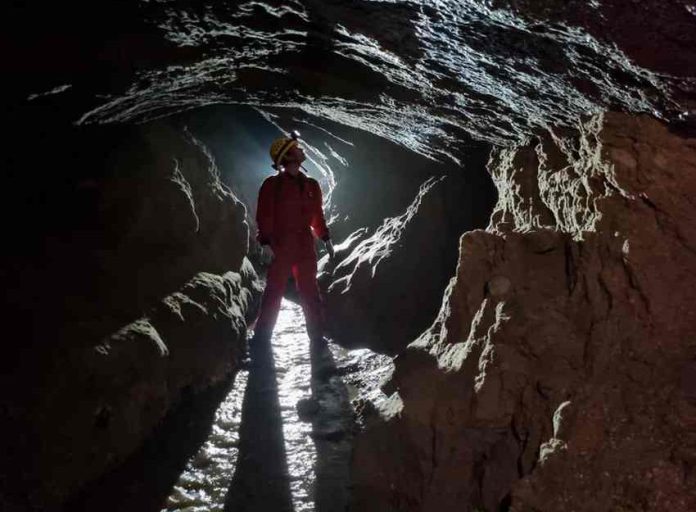One of the hidden rewards of cave exploration in Mexico is the accidental discovery of gorgeous rivers, canyons, hot springs, waterfalls or other natural phenomena on the way to or from a cave — which, on some occasions, may turn out to be a miserable hole in the ground with no redeeming merit whatsoever.
To stumble upon a jewel of natural beauty, as well as a cave of great interest, is good luck indeed.
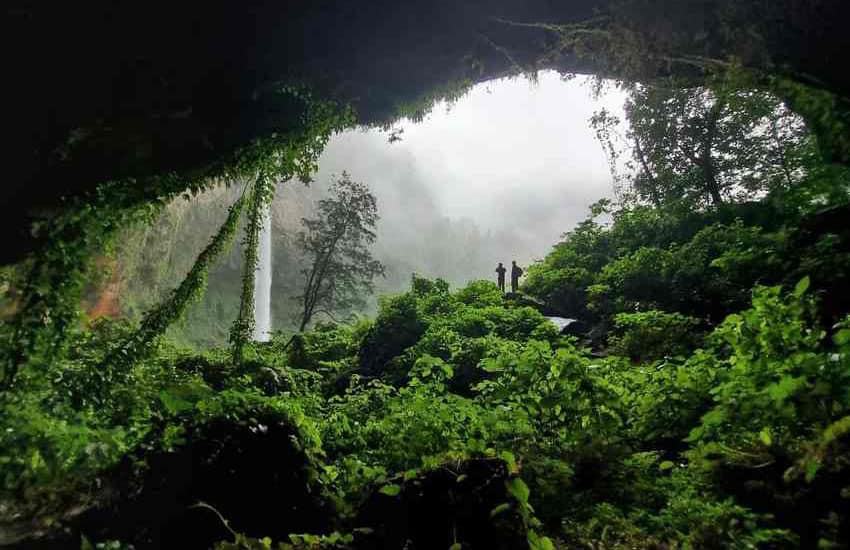
“But it happened to me recently,” says Mexico City geologist Ramón Espinasa, founder of SMES (Mexican Society for Underground Exploration).
Espinasa is especially interested in lava tubes, caves naturally formed when the surface of moving lava cools, allowing hot, molten lava to flow out from underneath it, creating an underground tunnel or room.
Because the state of Veracruz is home to some of Mexico’s best lava tubes, Espinasa is ever on the lookout for rumors of caves in that state.
“That’s how I came upon a YouTube video presenting a spectacular waterfall in Veracruz, located just outside a cave entrance. Fortunately the vlogger also included footage inside the cave, which I immediately realized was volcanic, but not a lava tube. It looked most interesting.”
Espinasa then organized an expedition to find and map La Cueva del Encanto, The Enchanted Cave, located in a remote area 130 km northwest of Veracruz city.
Upon arrival in the target zone, the team of speleologists learned how this particular cave had gotten its name.
Legend says that once upon a time, a farmer named Cirilo happened to pass by the cave entrance and noticed a strange light emanating from it. Curious, he walked into the cave and, inside, found a lake filled with crystal-clear water. Swans were swimming in the lake, and every time one of them came near him, it mysteriously transformed into a beautiful woman.

Cirilo decided to stay a while to enjoy this incredible spectacle and only reluctantly left the cavern a few hours later to get back to work.
His sombrero, which he had left outside the cave, was no longer there. Back he went to his milpa, where he discovered his wife looking older and dressed in black. To his surprise, he learned that what had seemed hours to him had been months to his family, which said that he had been gone for a full year and had been presumed dead.
Ready for enchantment, our cave explorers started out on a trail following the Alseseca River, which soon took them downhill.
“This slope was beautiful,” says explorer Vicente Loreto, “with high vertical walls on one side. I think we were in a cloud forest because we began to run into giant ferns. The vegetation was abundant, even lush. One surprise was that we never saw any trash, in spite of the fact that this place is a well-known tourist attraction. People come not only for the waterfall but also for the cave.”
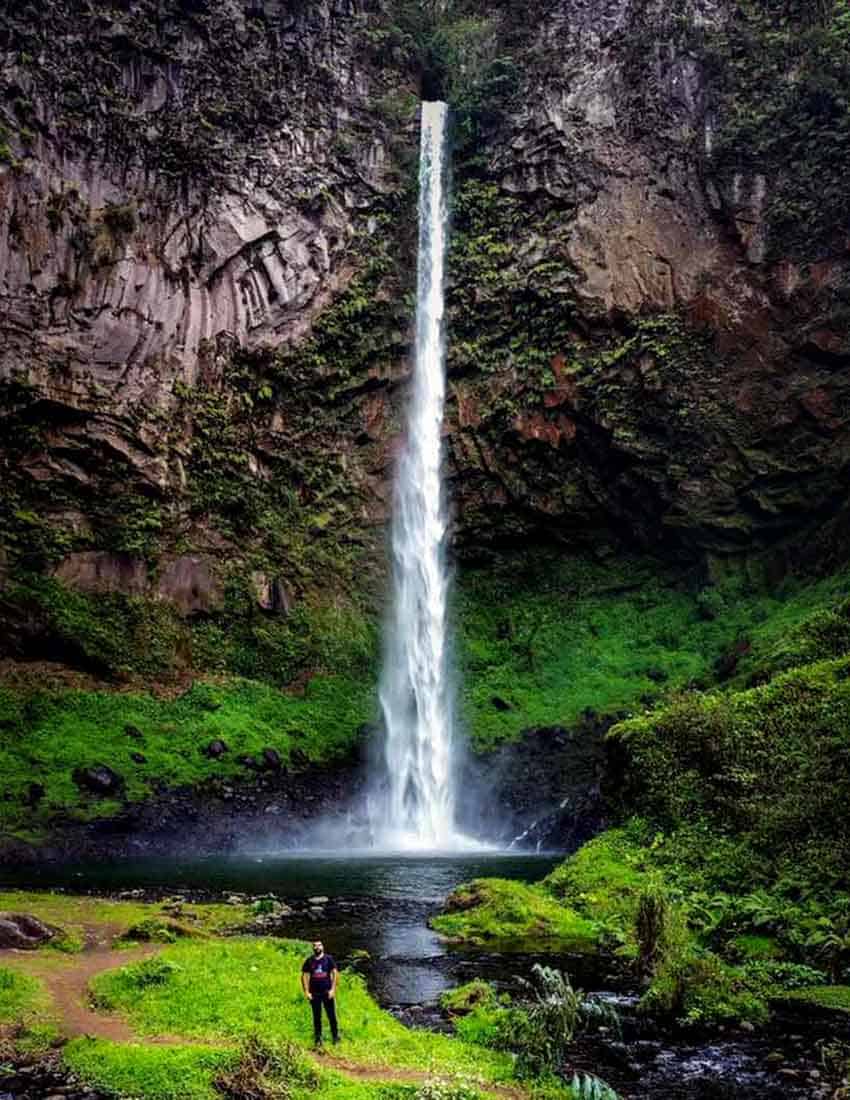
At the bottom of the slope, they came to a river with clean, clear water and to the tall, shimmering cascade locally known as El Velo de la Novia, The Bridal Veil.
“The waterfall is beautiful,” says Loreto, “and produces a fine spray that is very pleasant, inviting you to jump into the water. Really, the whole jungle-like scene makes you feel as if you’ve arrived in a lost world. All we needed was to see a big pterodactyl fly out of the cave entrance!”
That entrance — offering a dramatic view of the cascade — was 25 meters wide and 4 or 5 meters high.
“No sooner did I step into the cave than my headlamp went out,” reports Loreto, and — despite the legend — this was the closest thing to a supernatural event that the team experienced during their entire exploration.

La Cueva del Encanto turned out to be an easy, one-entrance, walk-through cave, sometimes 15 meters high. The walls were coffee-colored, but in a few places black and red.
In several parts of the cave, the team came upon what looked like large tubes or cylinders in the ceiling that clearly had nothing to do with the formation of the cave.
“When we took a close look at these,” says Loreto, “we saw they were black on top. We came to the conclusion that they were tree molds, that when volcanic ash covered this forest in ancient times, the heat was so intense that the trees were set on fire, not from external combustion but internal.”
As they mapped the cave, which turned out to be 520 meters long, the explorers inevitably found water at the end of every side passage, and in some cases, it was falling down from the ceiling as in a shower.
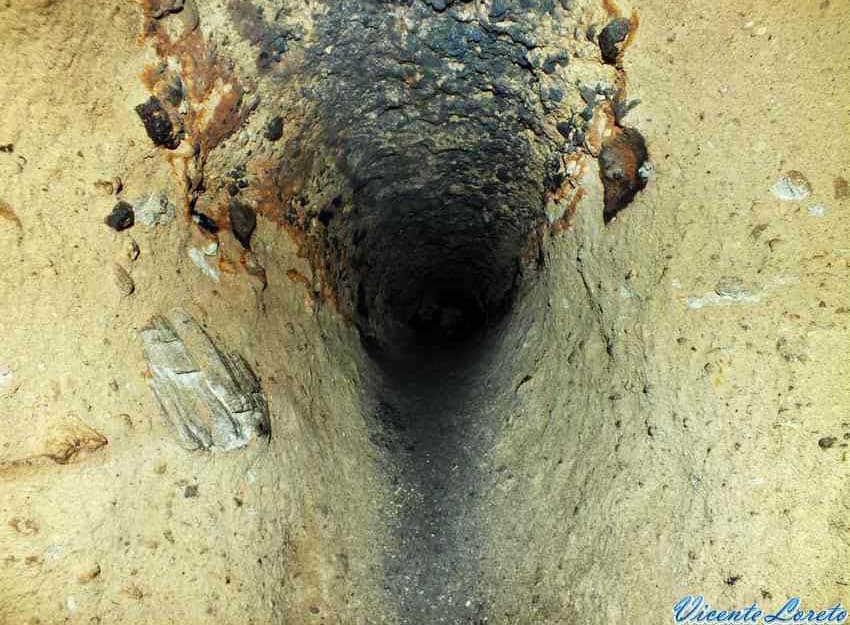
The frequent presence of water in the cave testified as to its origin, according to Espinasa and fellow geologist Chris Lloyd. They explained to me that the most common kind of caves are formed by slightly acidic rainwater slowly eating away at limestone rock under the surface.
The Enchanted Cave, however, which is formed in volcanic debris (tuff), came into being another way. Water seeped down into cracks and began gently washing away tiny particles of ash. This cleared the way for more water to flow, resulting in interconnected “pipes” transporting water to lower locations.
These piping caves are generally not very big, and it seems Mexico’s Cueva del Encanto — because it is over 500 meters long — will soon be included among the top 10 in Cave Exploring’s list of piping caves around the world.
Delighted to help give international recognition to an obscure Mexican cave and still dazed by the enchantments of a stupendous waterfall, the caving team bade farewell to this lost world, now ready to turn their exploratory talents to the numerous pulque stands they had spotted along the highway.
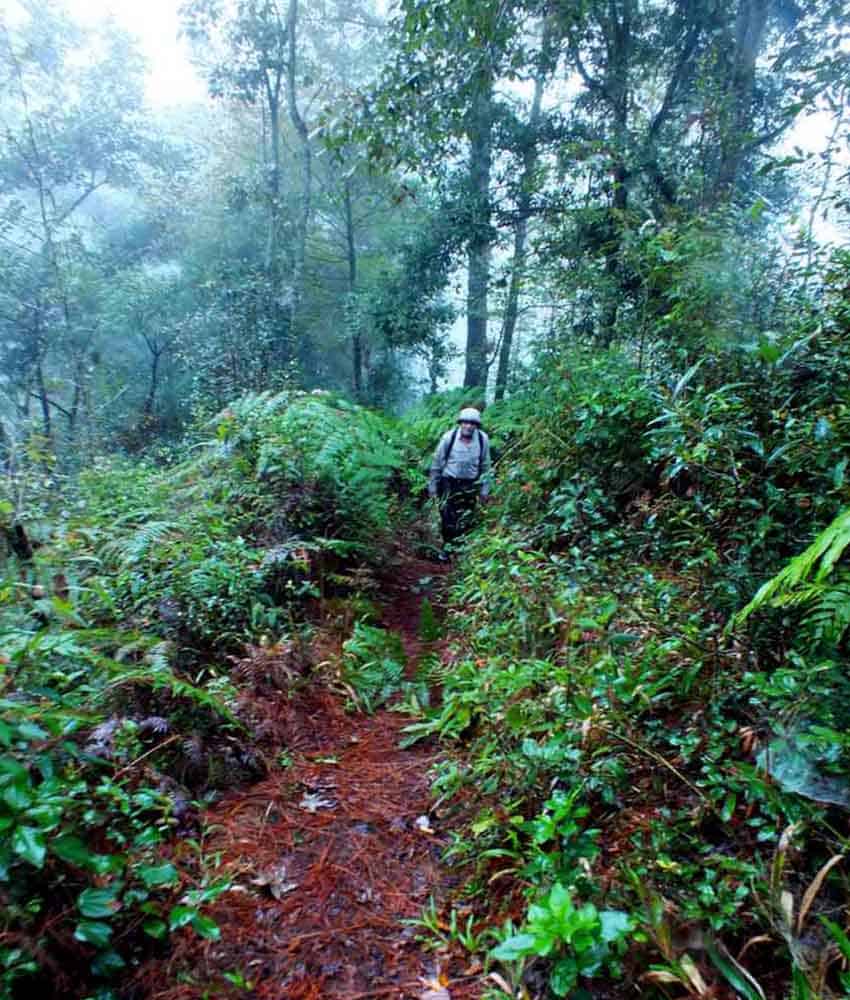
Would you, too, like to be enchanted? Check out the map to this site on Wikiloc.
The writer has lived near Guadalajara, Jalisco, since 1985. His most recent book is Outdoors in Western Mexico, Volume Three. More of his writing can be found on his blog.
